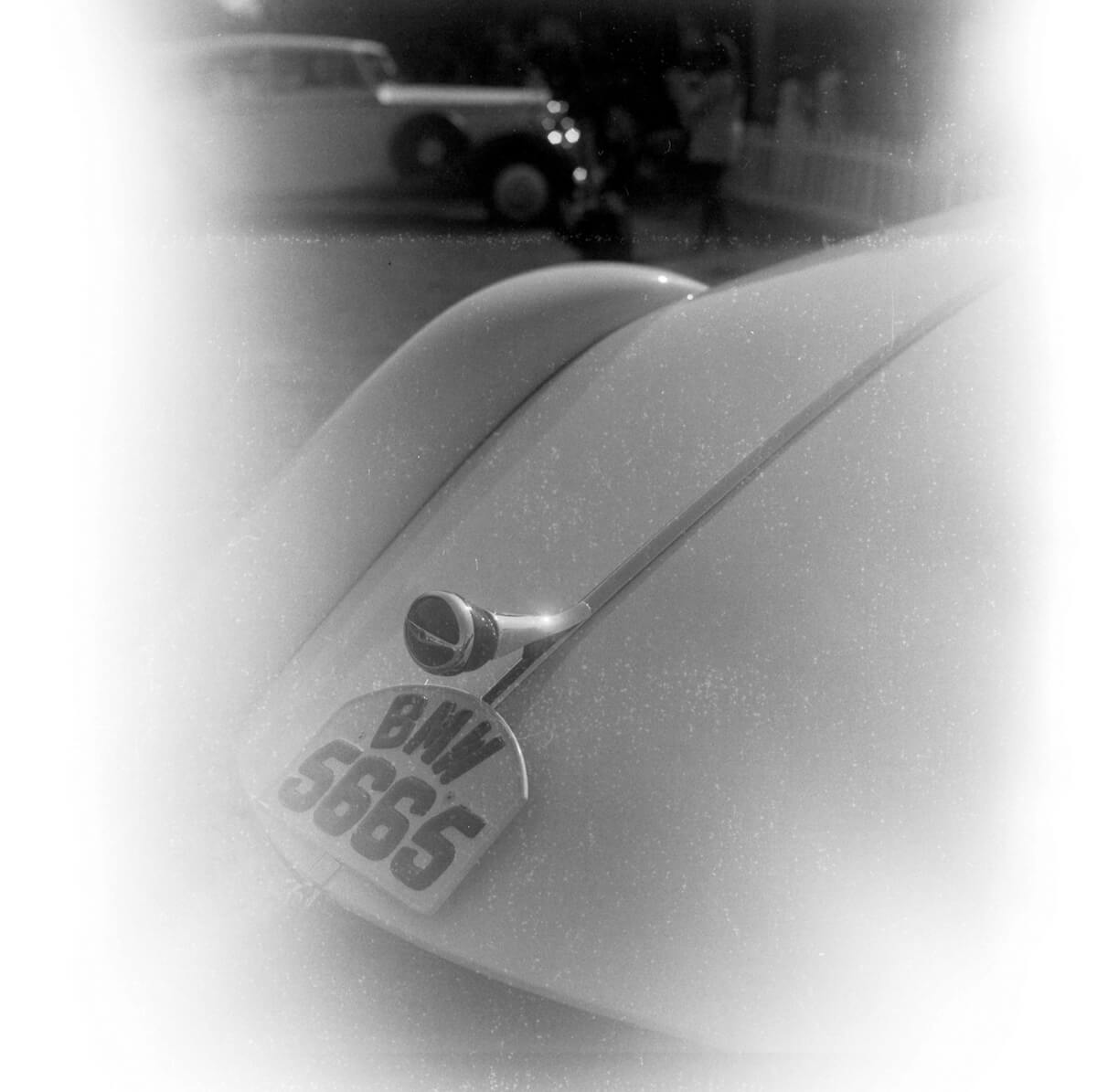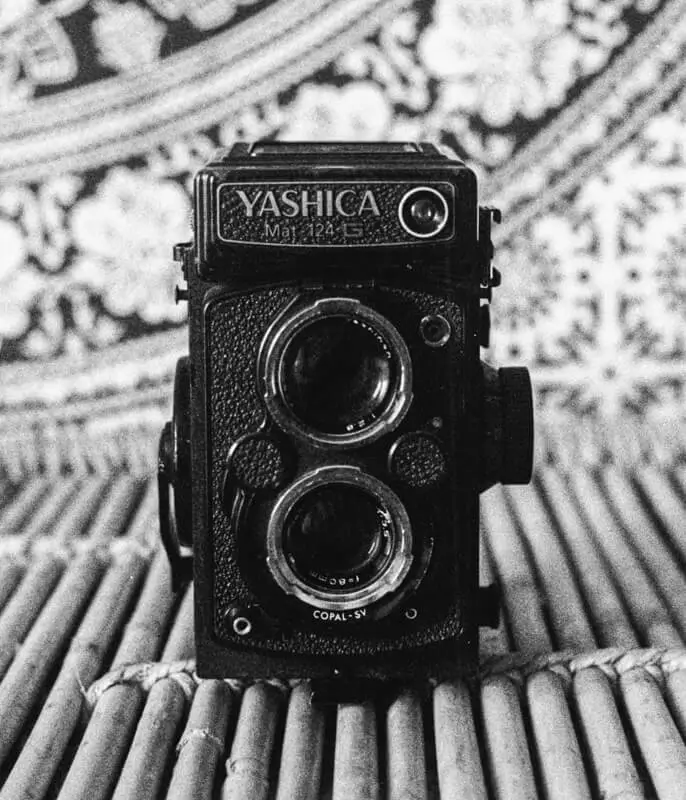“Earlier this year, I came across a couple of rolls ILFORD FP4 PLUS while shopping for a camera strap for my Fujifilm X100F at a local camera store in New Delhi. The moment I laid my eyes on them, I knew I had to grab a few to try them out with the only medium format camera I own, a Yashica Mat 124G. It’s been nearly two years since I got my hands on the camera; however, I had only shot a couple of rolls (Fuji NEOPAN 100 ACROS and CineStill 800T) with it until then. The results from the first roll (ACROS) I put through it was a mixed bag, with some of the shots not in focus (more on that later).
Fuji’s NEOPAN ACROS 100 is undoubtedly one of my favourite black and white films ever, and it’s also the reason I decided to splurge on the Fujifilm X100F a year ago. So it goes without saying that I was deeply disappointed when Fuji announced that it was discontinuing the original back in 2018. Based on conversations with other film photographers, I learnt that ILFORD FP4 PLUS was the closest one could get to getting similar results as ACROS. Armed with two rolls of FP4 in hand, I was waiting for the right setting to shoot them.
In February, way before the Covid-19 pandemic hit my country, an opportunity presented itself in the form of a vintage car rally not too far from where I live. I packed my Yashica Mat-124G and a roll of FP4 and Ektar 100 as well as the Fuji X100F and set out to shoot some post-war classics such as the Alfa Romeo Giulia, an Aston Martin DBS and a Triumph Spitfire.

For those not familiar with the Yashica Mat-124G (I doubt there are many; Yashica sold thousands of these Rolleiflex copies), it is a TLR that was produced between 1970 to 1986. It comes with an 80mm f3.5 taking lens that isn’t known for being the sharpest out there. My example has a rather dim focussing screen and has a slightly tilted focal plane (hoping a quick TLC will fix this issue). The person I bought this camera from suggested that I avoid shooting wide open or into the sunlight as the lens was prone to flaring. With the Copal leaf shutter limited to a speed of 1/500 sec. and it being a sunny day, most of these shots were shot handheld between f4 and f8 at 1/125 sec.





As you can see from the weird white spots on all of the shots, the film turned out to be defective. The lab where I gave the roll for developing said that it could down to the way the film was stored. The camera store I bought the roll from doesn’t refrigerate their stock of film, but I keep them in a relatively airtight ZipLoc in my freezer. After shooting the roll, I usually keep them in a light-sealed bag until I have enough rolls to ship off to the lab. I know for a fact that it wasn’t the lab’s fault since this roll, another roll of HP5 Plus that I had shot (had the same white spots as well) and my friend’s two rolls of Kodak Tri-X 400 were developed in the same batch and his rolls turned out completely OK. I contacted ILFORD after another friend said he had faced the same issue with a couple of rolls of HP5. ILFORD got in touch with me the very next day and said they were more than happy to replace the roll. Sadly, before they could ship it, Covid-19 forced Ilford to halt its operations.
Will this experience stop me from shooting FP4 Plus again? Well, no.
In fact, I ordered two more rolls from a different store and can’t wait to shoot them once the lockdown ends. Has anyone else experienced this issue with FP4 PLUS, or even HP5 PLUS? It’d be really helpful to get your thoughts on the reasons behind the white spots. Meanwhile, #shootfilmstaybroke. And more importantly, stay home and stay safe.
~ Nikil
Submit your 5 Frames… today
Get your own 5 Frames featured by submitting your article using this form or by sending an email via the contact link at the top of the page.
Share your knowledge, story or project
The transfer of knowledge across the film photography community is the heart of EMULSIVE. You can add your support by contributing your thoughts, work, experiences and ideas to inspire the hundreds of thousands of people who read these pages each month. Check out the submission guide here.
If you like what you’re reading you can also help this passion project by heading over to the EMULSIVE Patreon page and contributing as little as a dollar a month. There’s also print and apparel over at Society 6, currently showcasing over two dozen t-shirt designs and over a dozen unique photographs available for purchase.








4 responses to “5 Frames… On ILFORD FP4 PLUS (EI 100 / 120 format / Yashica Mat-124G)”
Used one in my photo lab during freshman year..loved that square format..consistent “A”s in class for portraiture and outdoor scenes..
Enjoyed your story and photos, thanks! Have to disagree with one point – MAT 124 G lens is very sharp, even from wide open – have ton of pictures to cover this point. That may be copy variation, or condition of lens / camera, that draws people to conclusion about “not sharp lens”. My MAT’s lens suffers from one draw-bag (common to many reports) – flare. To solve it – lens hood is a must.
Back in early March I read about Ilford’s program to replace customer’s HP4 and HP5 due to white specks and mottled grain. I was experiencing mottled grain and had several rolls of HP4 and HP5 promptly replaced.
I still have my Yashica 124G I bought new back in the ’80s. Still works, but the light meter window came loose interfering with the meter needle.
I recommend looking for a lens hood for it. I was lucky to get one made by Soligor.
The acquisition of equipment is part of the fun, no doubt about it but I urge you to think most about how you enjoy the experience from leaving the house to printing your images. You need ease and simplicity. The RB67 may be the wrong direction. TLR was a staple for many years in reportage…